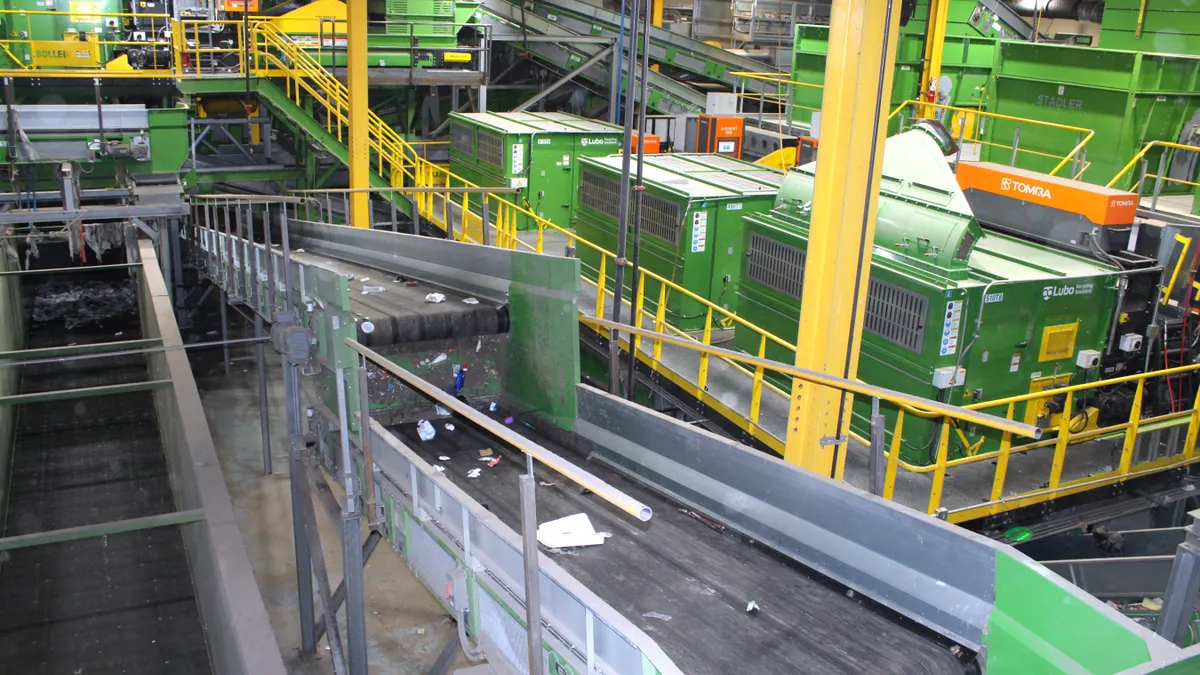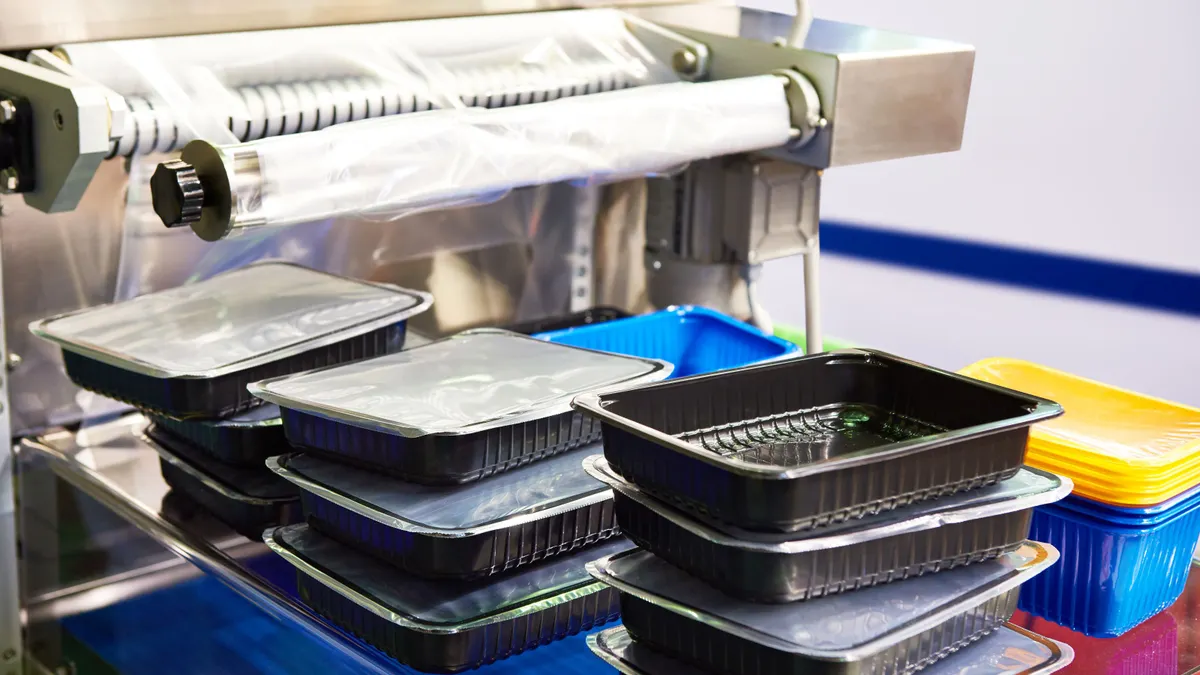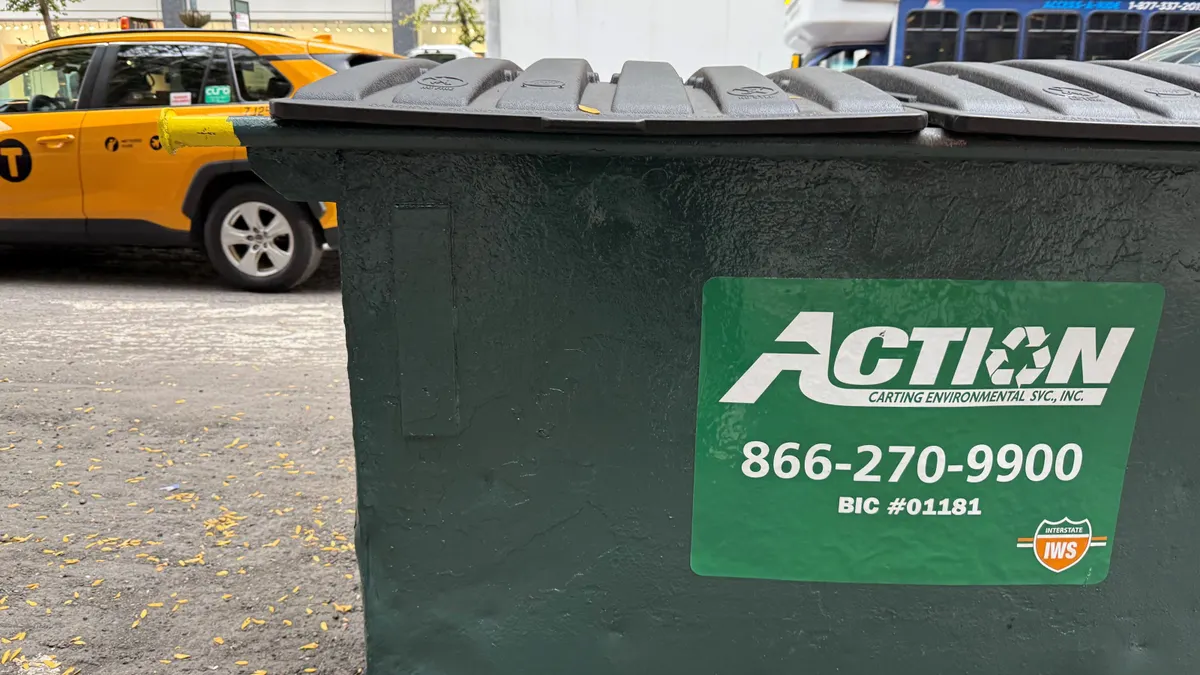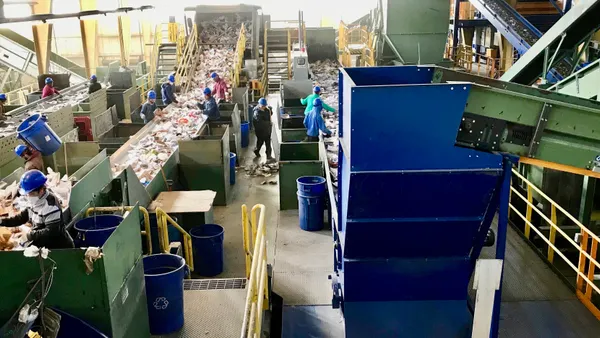Dive Brief:
- Wisconsin has updated some of the regulations that MRF operators, haulers and local governments must follow under the state’s recycling and waste disposal rules. The Wisconsin Department of Natural Resources held a webinar last week to update MRFs on the changes, which took effect July 1.
- MRFs are now required to reach at least a 12% glass recycling rate from residential sources, or submit a glass recycling improvement plan. The updated rules also set a maximum residual rate of 20%, which will be enforced starting in 2027, according to the Wisconsin DNR.
- Starting in 2027, MRFs that process more than 5,000 tons of material a year will need to follow state owner financial responsibility rules meant to cover closure and cleanup costs if a facility ceases operation. OFR is already required for some other solid waste processors in the state.
Dive Insight:
Wisconsin’s waste reduction and recycling law, first established in 1990, bans the disposal or incineration of many recyclable materials such as certain plastic and glass containers, cardboard and some kinds of electronics. State law also requires that every Wisconsin resident must have some kind of residential recycling or drop-off service “within easy access” and should be provided with recycling information.
A 2020 state audit recommended refreshing some of the rules that governed “effective recycling programs,” since those rules were last updated in 2005, according to the DNR.
The rule changes, which went through a stakeholder engagement process before being finalized, aim to keep recycling programs effective, refresh recycling goals and ensure that MRFs are maintaining material quality, DNR said.
The new 12% glass recycling rate and 20% residual cap likely won’t be a problem for most MRFs, said Jennifer Semrau, DNR’s waste reduction and diversion coordinator, during an Aug. 26 webinar. That’s because the new glass recycling rates were calculated based on collection and recycling data from previous years. The rule also excludes glass collected from commercial sources that can have an unpredictable amount of glass compared to other materials like cardboard.
“This is just to make sure that people are making a good faith effort to recycle glass at their facilities,” added Casey Krausensky, DNR’s solid waste coordinator.
Most MRFs are also sending less than 20% of their material for disposal, Semrau added, but the facilities with higher residuals will start getting warnings from DNR in the period before the regulation is fully in effect in March 2027. “This allows us to tell the general public that material that goes to the recycling facility is being recycled,” she said.
Another notable update is the requirement that certain MRFs budget sufficient funds in case they need to permanently close the facility. That funding would need to cover required “long-term care,” such as maintenance or monitoring.
This OFR funding would only be used if the operator abandons or is unable to properly close a facility, Krausensky said, “so if you close your facility or MRF and properly clean up all the standing materials on the site, all that happens is the OFR is returned to you,” she said.
MRFs, transfer facilities and storage facilities must also take more specific steps to properly store unbaled paper, plastic or other “easily airborne” material so it doesn’t become litter, according to the rules. Transfer and storage facilities must segregate recyclables separate from solid waste.
The updated regulations also have provisions for local governments, known in the law as responsible units or RUs. These RUs — which could include a municipality, county, tribe, solid waste management system or another entity — have long been required to establish and operate recycling programs in localities throughout the state.
Those responsibilities include providing recycling education to residents. That education should cover specific topics like how to recycle items banned from landfill disposal including used oil, yard materials and electronics. As part of the new rule update, RU education will now need to also include battery and food waste guidance. MRFs will need to communicate with RUs and haulers about the materials MRFs accept for recycling and to review contracted RUs’ educational materials for accuracy.
Other rule updates provide more specific instructions for how RUs must offer “adequate” recycling options for multifamily complexes and require RUs to offer additional recycling drop-off locations if they currently only offer monthly curbside collection to residents.











